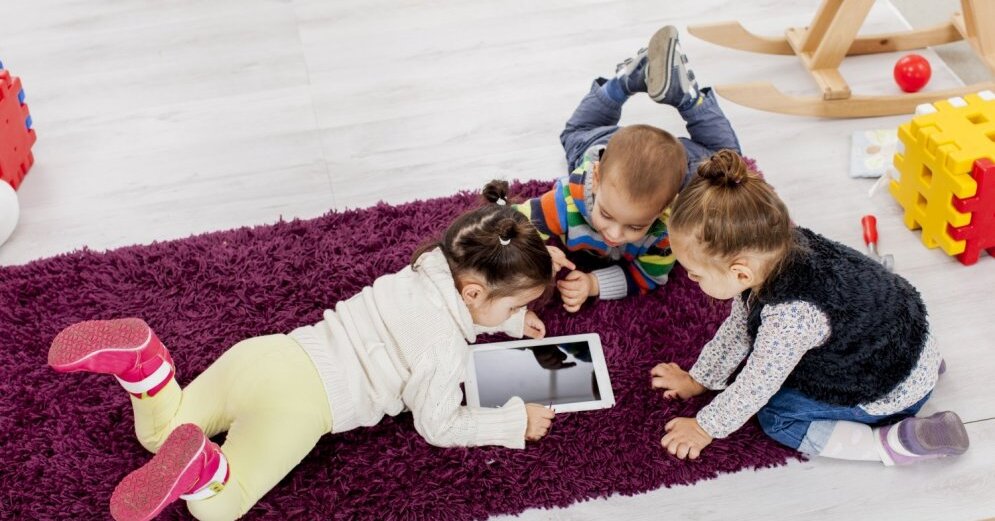As the spread of technology and its role in our lives grows, the use and importance of technology in children’s lives is also increasingly discussed. While some believe that the child’s “meeting” with technology should be kept as far away as possible, others see it as an opportunity to help the child learn and learn new things.
–
–
Content will continue after the ad
Advertising
–
Private preschool “Patnis” teacher Baiba Satori (photo below – red.) emphasizes that moderate technology is a great tool in the learning process. The teacher is skeptical about a total ban on technology, pointing out that the child will not understand why he is denied what his parents use on a daily basis, often even very often. Next, the educator’s opinion on how to use smart devices wisely and how to agree with the child on the allowed time of use.
Technology is useful in the learning process
For today’s children, technologies – smartphones, tablets, etc. – are very relevant and interesting. And not just for children, but also for adults. Seeing that parents use a lot of smart devices a lot and often on a daily basis, it is natural that children also have an increased interest. As a teacher, I believe that technology can be used perfectly in the learning process, and thus the teacher can control not only the content, but also the duration of use. In the 21st century, it is becoming increasingly difficult to engage children using wooden blocks alone, so photo, video and audio opportunities also have a place in the learning process.
The duration of use depends on the age
As soon as it is interesting for children, their motivation to learn also changes. Children are much better able to memorize new things if they are presented in a compelling way. When perceiving visually, in an interactive way, through video, the understanding of new things develops much faster. Technology is also a good tool for language learning.
Of course, the use of technology is not desirable throughout the day, and the amount – the duration of use also depends on the age of the children. At the age of two or three, the use of technology in pre-school education should be negligible, while the amount of four or five years can already be increased.

–
Parental example
The use of technology is also allowed outside of school free time, but as in the learning process – by limiting the duration and offering various possible activities in addition to technology. If a child has unrestricted access to various devices and the Internet, it will be very difficult to get him interested in practical activities. It is also unequivocally the responsibility of parents to control both the duration and the content of use. Regarding the role of parents, it should be noted that we also need to think about the example we set for children. Whether at home or at leisure with children, we will be present and devote our time to them, not immerse ourselves in our smart devices.
For small, pre-school children, 10 minutes at home can also be enough to spend using a smart device, while for school-age (first-graders) this limit can be increased to half an hour or an hour. Of course, this does not include cases where the child learns remotely and participates in lessons or completes tasks with the help of technology. Technology must be used wisely, avoiding excessive use “for the sake of sweet peace”.
The rules must be followed by both children and parents
Regarding the time and content restrictions, it should be noted that all the rules need to be pronounced before using the technology and adhere to them – both children and parents. It is often easier for teachers to draw boundaries than for parents, as the “soft heart effect” sometimes encourages them to agree to the child’s request for extra time, but this only causes problems and the child will try to spend more time online or on a smart device next time.
In general, both parents and educators would be encouraged to be open to the use of smart technologies. If our childhood did not have such opportunities and the greatest joy was coloring books, it does not mean that our children should not use technology. Most importantly, do it wisely and in moderation. A total ban will only encourage too much interest, because how the child will not want to try a device that parents look at and “push” the screen from time to time. The most important thing is to talk to the child and explain why the use of technology should be restricted and rules should be developed together. “
–

